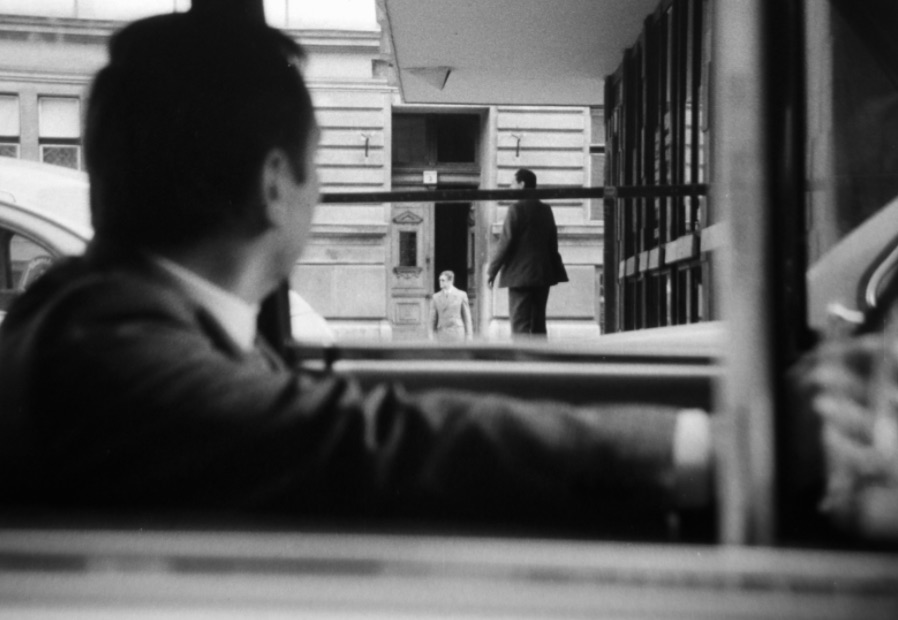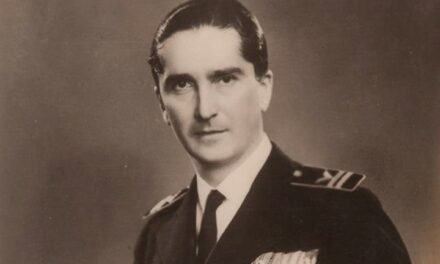The historian Zsuzsanna Borvendég's series was originally published on the PestiSrácok website, but there are certainly those who missed it. But those who haven't read all the parts should also read it again. Knowing the whole picture, can we understand how we got here?
In the previous parts of the series, we have already mentioned Frankfurt several times as one of the main hubs of the emerging Western economic relations system. In 1949, the Hungarian trade branch was opened in the German city István Bródy , and his successor, Károly Junger , was the one who struck successful economic agreements with the West German trade administration in the early fifties. He built a system of commitments based on corruption funds using the staff of the relevant ministries , and with this he was able to win very favorable annual export and import quotas for Hungarian companies.
In the first half of the 1950s, the Frankfurt office was mostly staffed by people under the control of internal affairs. Károly Junger was also placed there as an agent of the state defense, his guard officer - as it was mentioned before - was the "claw-like" Bauer . During the days of the 1956 revolution and in the period that followed, the majority of employees left the office building and decided to emigrate. The office had to be reorganized, and then came the time of the rival service, military reconnaissance.
Another perfectly reliable communist
A well-known engineer was entrusted with the reorganization of the branch, a reliable comrade who had no commercial experience: János Sebestyén . Sebestyén was born in 1911 in a middle-class family, and graduated as an electrical engineer in 1934. From 1936, he was actively involved in the activities of the illegal communist party, according to his claim, of Endre Ságvári . During the war, he was exempted from labor service because he worked in a war plant. In 1945, he was appointed deputy head of department at the Budapest Electric Works, then in the fall of 1946 he was transferred to the Heavy Industry Center, where he became head of department, and then, from 1948, deputy general manager.
Fast career. He took an active part in the start-up of heavy industry and contributed to the development and implementation of the concept aimed at building the "country of iron and steel". At his own request, in 1949 he became the head of the Heavy Industry Investment Company, where he supervised the construction of the Dunai Vasmű and Sztálinváros as a government commissioner. From 1954, he worked as a deputy minister at the Ministry of Heavy Industry on the development of the country's electricity network, and from October 9, 1954, he became an employee of the Ministry of Chemical Industry and Energy headed by Árpád Kiss
"At my request, in May 1957, I was relieved and entrusted with the management of the Frankfurt office of the Ministry of Foreign Trade in West Germany," reads his biography.

János Sebestyén (image source: ÁBTL)
He went to Frankfurt to get rich
Sebestyén had no commercial experience, so we can find only one logical explanation for his appointment: in his person, a specialist was installed in the FRG who, thanks to his previous positions, perfectly knew the level of development, shortcomings and needs of Hungarian industry, so he was suitable for studying German technology and the necessary products for procurement. During his years in Frankfurt, he really brought home embargoed technologies, but more importantly, he established the cooperation with the large West German companies that became Hungary's number one business partners during the Kádár regime.
Sebestyén came to the FRG to get rich and build relationships. According to information from the state security, he applied for the Frankfurt station because he wanted to be in a position "where you can earn well, where you can collect reserves." He didn't choose blindly. with Károly Junger – according to the secret service, they were related – so through him he knew the system of corrupt relationships that Junger began to build.
The intention of the West German companies to break into the Eastern markets was a source of bribe money for the middlemen, and Sebestyén did not want to be left out of the profitable business.
The outsourcing mafia began to take over
The outsourcing mafia, which was slowly taking shape, was behind the appointment of the engineer, as his activities were supported by people such as the previously mentioned "gray eminence", János Nyerges , or even the lesser-known banker János Fekete . You can read interesting reports from this period about the conditions in Frankfurt. An internal affairs agent working there complained at length about Sebestyén's illegal financial affairs in his report, and then went on to say that:
"despite the fact that in the period following the counter-revolution, due to the defection of the head of the office and several subordinates, and the hostile behavior of the West Germans, they had to endure for a long time in very difficult conditions and with almost no support from home, still the outgoing leaders, Comrade Nyerges from the Ministry of Foreign Trade, and Comrade Fekete from the Directorate of Foreign Exchange, ignoring their difficult situation, reported back home that the office was politically and professionally weak. However, just a few months after Comrade Sebestyén arrived, Comrade Fekete is already praising the branch."

"Comrade banker" János Fekete (image source: Demokrata)
also in contact with the previously mentioned Emil Hoffmann (Remember: Emil Hoffmann used information from the intelligence agencies of the time that he collected from here and there. Sebestyén was also one of his sources of information, from whom he presumably also received a "letter of recommendation" that the Kádár leadership would trust him in Budapest.)
Instead of BM, MNVK-2. became the key
Under Sebestyén's leadership, the Frankfurt set was quickly replaced, and the office was filled with people loyal to him. Since the state defense was demoralized during the revolution, the Ministry of the Interior was busy with the reorganization of the political police and the secret service at the end of 1956 and the first half of 1957, and could devote less attention and energy to foreign stations. The rival military intelligence, the MNVK-2 (2nd Group Chief of the Hungarian People's Army General Staff), had more room to maneuver.
Within the framework of the party-state dictatorship, this economic and financial network could not have functioned without the help of the secret service. After the war, the communist leaders who returned home from Moscow and were trained there began the landscaping, they entrusted tasks to the first inducted set and created the organizational background for their work. At that time, they still worked for the state defense and, at first, for the Economic Law Enforcement Department, i.e. the secret police of the interior - we can think of Nyerges, János Fekete or Junger here.
Kádár didn't trust the former ÁVH either
After the revolution, the situation gradually changed. With the establishment of the Warsaw Pact in 1955, the national defense organizations of the member states, including reconnaissance, came under direct Soviet control and assumed an increasingly important role in the field of inter-bloc cooperation. And it should not be ignored that Kádár did not trust the state security inherited by the State Defense Authority, since they put him in prison in the early fifties. (Of course, despite the mistrust, he used them without hesitation during the reprisals.)

State security training (photo: Fortepan)
MNVK-2. its positions were also strengthened by the fact that its reconnaissance area was partly defined in the operational direction of the Danube Valley, which included Austria and southern Germany, so the commercial office in Frankfurt was an important base for them from the beginning, since it was a diplomatic representation to which a military attache could be officially delegated, at that time it did not exist in the territory of East Germany.
With the appointment of Sebestyén, they saw an opportunity to take control of the office from the rival interests of the interior. "It looks like, in the person of Comrade János Sebestyén, a politically appropriate person has now come to the head of the representation for the first time" - we can read the report of the military reconnaissance, which concludes as follows: "From Comrade Sebestyén's words, it could be deduced that they will be gradually replaced [i.e. employees of the office]. You might be able to get involved here when it comes to sending out new ones. The current ones were all involved in the work of the partner organization." All this proves that the military secret service trusted that Sebestyén would help them strengthen their positions.
They were not disappointed. In the course of the next few years, a number of foreign traders came to the German station, who were part of the MNVK-2. they acted as his winners and were also in Sebestyén's service for many years.
Frankfurt was the cradle of the expatriate mafia network , who under Sebestyén managed to really embed themselves in the circle of interests of the German big companies. At the end of the 1950s, a closed group formed around Sebestyén, supported by Nyerges and Fekete from home, and one of their most spectacular results was that they increased and ensured the share of the large West German conglomerates (for example: Siemens, Krupp, Mannesmann) in the Hungarian markets. Their power and influence remained unbroken until the eighties.
Sebestyén returned to Hungary in the second half of 1959. During his two-and-a-half-year assignment, he laid the foundation for his future: he built extensive relationships with the management of various large multinational companies, who later remained "grateful" to the powerful engineer-trader for protecting their market positions. In the early 1960s, János Sebestyén received a mandate from which he could manipulate Hungary's trade policy to his liking: he became the vice-president of the National Technical Development Committee.
Source: PestiSrácok
Author: historian Zsuzsanna Borvendég
(Header image: ÁBTL)













